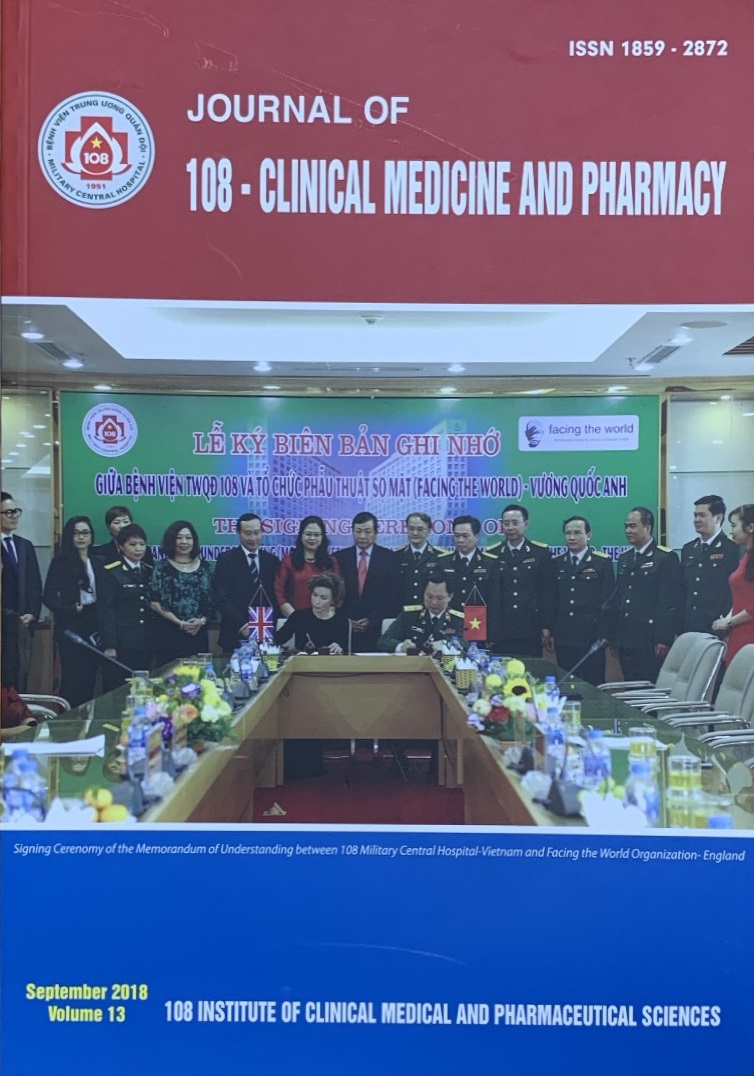Preliminary evaluation of 18FDG PET findings in pediatric patients with autism
Main Article Content
Keywords
Tóm tắt
Objective: The purpose of this study was to evaluate 18FDG positron emission tomography (PET) findings in pediatric patients with autism. Subject and method: This study includes 15 autism pediatric patients who were diagnosed at the Vinmec International Hospital from January 2017 to May 2017 and five oncology patients without neurology’s diseases underwent to whole body PET scan (from vertex to midthigh) were selected as control group. All patients underwent PET/CT brain examination in Nuclear Medicine Department, 108 Military Central Hospital. Result: Mean patient age (7.1 ± 0.24). On the PET scans of the 15 patients with autism, 13 (86%) had significantly decreased metabolic activity of both hemispheres. All of the patients had decreased metabolism in temporal, parietal and cingulate gyrus. Mean of Z-scores of autism group showed significantly decreased activity in comparison with Z-score of the control group. There were relations between clinical and grade of hypometabolism of autism. Conclusion: Hypometabolism in the brain of autism pediatric patients may present a role in diagnosis and prognosis.
Keywords: Autism, 18FDG PET.
Article Details
Các tài liệu tham khảo
2. Chivate, Rahul S et al (2016) PET/CT in autism, a diagnostic tool. International Journal of Health Sciences and Research 6(4).
3. Dilber C et al (2013) Positron emission tomography findings in children with infantile spasms and autism. J Clin Neurosci 20(3): 373-376.
4. Gupta SK and Ratnam BV (2009) Cerebral perfusion abnormalities in children with autism and mental retardation: A segmental quantitative SPECT study. Indian Pediatr 46(2): 161-164.
5. Chugani HT, Da Silva E, and Chugani DC (1996) Infantile spasms: III. Prognostic implications of bitemporal hypometabolism on positron emission tomography. Ann Neurol 39: 643-649.
6. Kouo, Jennifer L and Egel, Andrew L (2016) The effectiveness of interventions in teaching emotion recognition to children with autism spectrum disorder. Review Journal of Autism and Developmental Disorders 3(3): 254-265.
7. Varrone A et al (2009) EANM procedure guidelines for PET brain imaging using [18F]FDG, version 2. Eur J Nucl Med Mol Imaging 36(12): 2103-2110.
8. Boddaert N and Zilbovicius M (2002) Functional neuroimaging and childhood autism. Pediatr Radiol 32(1): 1-7.
9. Mitelman SA et al (2017) Positron emission tomography assessment of cerebral glucose metabolic rates in autism spectrum disorder and schizophrenia. Brain Imaging Behav.
10. Zilbovicius M, Meresse I and Boddaert N (2006) Autism: neuroimaging. Rev Bras Psiquiatr 28(1): 21-28.
 ISSN: 1859 - 2872
ISSN: 1859 - 2872
